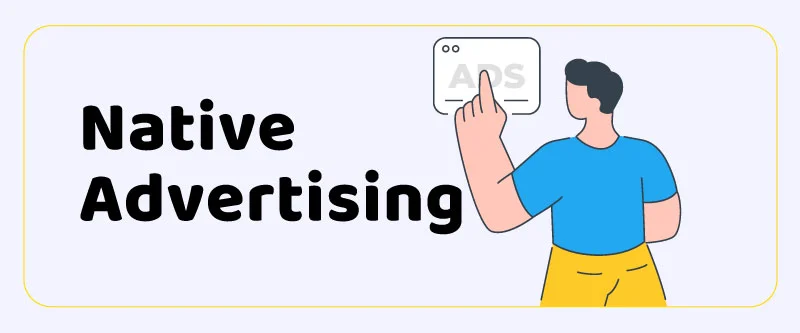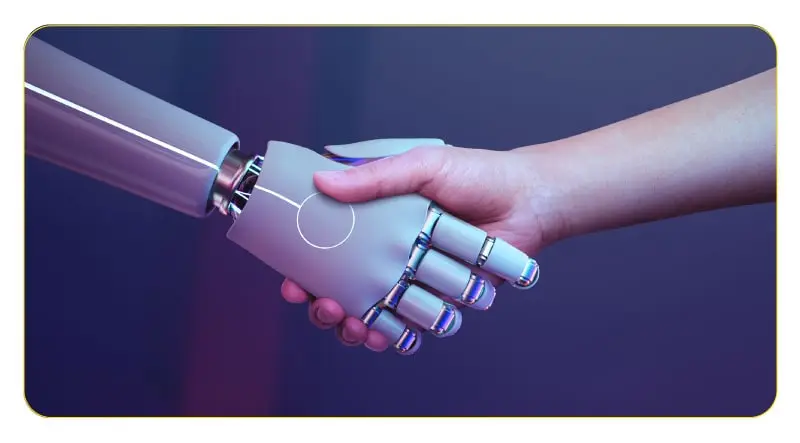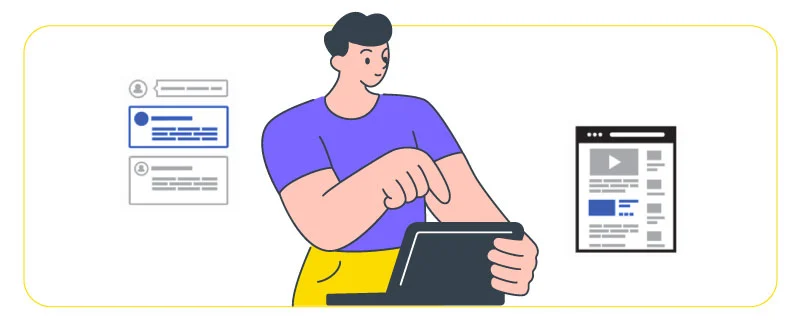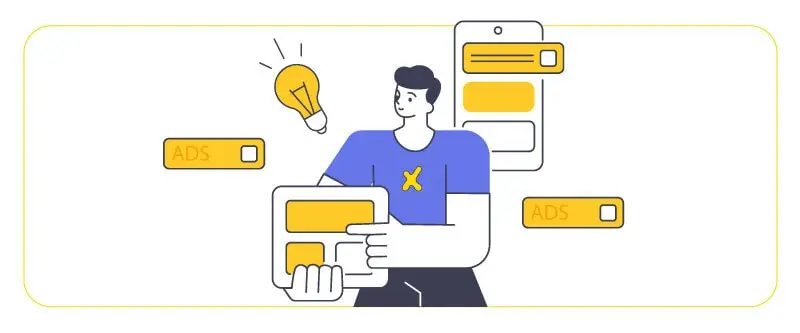Native advertising is a form of advertising that integrates smoothly with the surrounding content, creating a more natural and engaging experience for consumers. As traditional advertising methods lose effectiveness and audiences grow more discerning, native advertising has become a powerful tool for capturing attention and boosting engagement. However, with the rapid evolution of technology and shifting consumer behaviors, the future of native advertising remains unpredictable. In this article, we will delve into the latest trends and forecasts shaping the future of native advertising and highlight the importance of staying ahead of the curve.

One trend that has emerged in recent years is the use of influencers in native advertising. Influencers have a large and engaged following on social media, making them an ideal way to promote products or services in a way that feels authentic and genuine. Brands are increasingly partnering with influencers to create sponsored content that seamlessly blends in with the influencer’s organic content. However, as the industry matures, there are concerns about transparency and authenticity, and it’s important for advertisers to ensure that they are working with influencers who align with their brand values and can deliver measurable results. As we look to the future of native advertising, the use of influencers is likely to continue to grow, but with a renewed focus on transparency and authenticity.
Current State of Native Advertising
Native advertising has become increasingly popular in recent years, with brands recognizing the need for more subtle and authentic forms of advertising. As of now, native advertising has evolved beyond traditional forms of banner and display ads to blend seamlessly with the user experience of the platform it’s being displayed on. This means that brands are able to engage their target audience more effectively while maintaining the authenticity of the platform.
One of the significant advantages of native advertising is that it offers a less intrusive way of advertising. Unlike other forms of ads that can feel like an interruption, native ads blend with the content in such a way that users may not even realize they are being marketed to. This makes it more likely that they will engage with the ad and potentially become customers.

However, native advertising also presents its own set of challenges. One such challenge is ensuring that the ad is not misleading or deceptive, which can lead to negative consequences for both the brand and the platform. Another challenge is the need to continually create fresh and engaging content that resonates with the audience while still being consistent with the brand’s values and goals.
Given the current trends and practices in native advertising, it’s clear that this form of advertising will continue to grow and evolve in the future. It’s essential for brands to stay up to date with these trends to ensure that they can effectively reach and engage their target audience.
Emerging Technologies Impacting Native Advertising
Native advertising has been rapidly evolving to keep pace with advancements in technology. Emerging technologies such as artificial intelligence and machine learning, virtual and augmented reality, and the Internet of Things (IoT) are beginning to shape the future of native advertising.
Artificial intelligence and machine learning are already being used to personalize content recommendations and optimize ad delivery. As these technologies continue to evolve, they will play a larger role in the creation of native ads that are more targeted, relevant, and effective.

Virtual and augmented reality are also changing the face of native advertising. Brands can now create immersive experiences that allow consumers to interact with products and services in a more engaging and memorable way. This not only enhances the overall user experience but also increases the chances of conversion.
The Internet of Things (IoT) is another emerging technology that is expected to have a significant impact on native advertising. With connected devices becoming more prevalent, marketers can now deliver personalized and contextualized content to consumers based on their location, interests, and behavior.
As these technologies continue to mature, we can expect to see native advertising evolve even further, providing marketers with new and innovative ways to engage with their target audiences.
Changing Consumer Behavior and Expectations
Looking back at the history of native advertising, we see that way consumers interact with advertisements has evolved significantly over the past few years, and this trend is expected to continue in the future. With the growing use of ad-blocking software and increasing concern for privacy and data protection, advertisers need to be mindful of the impact of their advertising efforts.
One of the most significant changes in consumer behavior is the demand for personalized and relevant content. Consumers want to see advertisements that are tailored to their interests, needs, and preferences. This trend has led to the rise of native advertising, which is designed to blend in with the user’s content seamlessly.
However, as the demand for personalized content continues to increase, advertisers need to be careful not to cross the line into the invasive territory. Consumers expect brands to respect their privacy and use their data responsibly. Advertisers must find a balance between delivering relevant content and respecting the user’s privacy.

Another major trend in consumer behavior is the growing use of ad-blocking software. Consumers are becoming increasingly annoyed with intrusive, irrelevant, and annoying advertisements. As a result, they are turning to ad-blockers to get rid of them altogether.
To combat the impact of ad blockers, advertisers need to find new and innovative ways to reach their audience. This is where emerging technologies like AI and machine learning, virtual and augmented reality, and IoT come into play. These technologies offer advertisers new ways to engage with their audience and deliver personalized, relevant content without being intrusive.
In summary, the future of native advertising is closely linked to changing consumer behavior and expectations. Advertisers need to find a balance between delivering relevant content and respecting the user’s privacy. Additionally, they need to find new and innovative ways to reach their audience and provide a seamless user experience. As technology continues to evolve, native advertising will undoubtedly play an even more significant role in the advertising landscape.
Future Trends and Predictions for Native Advertising
As the advertising landscape continues to evolve, it’s important to stay ahead of the curve and anticipate future trends. In the world of native advertising, there are several emerging trends that are shaping the future of this advertising format.
One major trend is the increased adoption of interactive and immersive ad formats. With consumers becoming increasingly accustomed to digital experiences that blur the line between reality and fiction, native advertising is also adapting to become more engaging and interactive. Brands are experimenting with new ad formats that offer interactive elements, such as 360-degree video and augmented reality experiences, to create more immersive and memorable ad experiences for consumers.

Another trend that is gaining momentum is the use of voice-activated advertising. As smart speaker devices like Amazon’s Alexa and Google Home become more ubiquitous, brands are exploring new ways to create voice-activated ads that can be delivered directly to consumers in their homes. This technology presents a unique opportunity for advertisers to create highly personalized and relevant ad experiences that cater to consumers’ needs and preferences.
Transparency and authenticity in advertising are also becoming increasingly important as consumers demand more honesty and accountability from brands. Advertisers are now required to be more transparent about their data collection and usage practices to build trust with consumers. The emphasis is shifting from interruptive advertising to more value-based advertising that provides consumers with useful and relevant content.
As the industry continues to evolve, it’s important for brands to stay on top of emerging trends and technologies to stay relevant in the ever-changing landscape of native advertising.
Implications for Advertisers and Publishers
As native advertising continues to evolve, both advertisers and publishers must adapt their strategies to stay ahead of the game. Advertisers must focus on creating high-quality, engaging content that provides value to their target audience while also keeping up with emerging technologies and trends. This means adopting interactive and immersive ad formats, leveraging voice-activated advertising, and prioritizing transparency and authenticity in all their campaigns.

Publishers, on the other hand, must strike a balance between monetization and user experience. They should be cautious about the number of native ads they display and ensure that the ads are relevant, valuable, and seamlessly integrated into their content. Collaboration and partnerships between advertisers and publishers can also help to ensure that native ads are effective and mutually beneficial for both parties.
Ultimately, the future of native advertising relies on the ability of advertisers and publishers to keep pace with changing consumer behaviors and technological advancements while also maintaining the trust and engagement of their audience. By staying ahead of the curve and adapting their strategies to meet evolving demands, advertisers and publishers can continue to leverage the power of native advertising to reach and engage their target audience in meaningful ways.
Conclusion
Native advertising has come a long way since its inception, and it continues to evolve at a rapid pace. As we have seen, emerging technologies such as AI, VR, and IoT are already having an impact on the way advertisers and publishers approach native advertising. However, changing consumer behavior and expectations are also driving this evolution, with demands for personalized, relevant, and transparent content.
Looking ahead, the future of native advertising holds many exciting possibilities, including interactive and immersive ad formats, voice-activated advertising, and an even greater emphasis on transparency and authenticity. As these trends continue to shape the advertising landscape, it is crucial for advertisers and publishers to stay informed and adapt their strategies accordingly.
By keeping up with emerging technologies, focusing on personalization and transparency, and forging strong collaborations between advertisers and publishers, brands can take full advantage of the potential of native advertising. The future of native advertising is indeed bright, and those who are willing to embrace it will undoubtedly reap the rewards.
FAQs
What is native advertising, and why is it important for the future of digital marketing?
Native advertising is a form of advertising that blends seamlessly into the user experience of a website or platform. It is important for the future of digital marketing because it provides a non-intrusive way for advertisers to reach audiences, and it can be more effective than traditional banner ads or pop-ups in terms of engagement and conversion rates.
Is the use of native advertising decreasing?
The use of native advertising is not decreasing. In fact, it has been growing steadily in recent years, as more advertisers and publishers recognize its effectiveness in reaching audiences in a non-intrusive way.
How is technology like AI and VR likely to impact the future of native advertising?
Technology like AI and VR is likely to have a significant impact on the future of native advertising. AI can help personalize and target content more effectively, while VR can provide new opportunities for immersive and interactive advertising experiences.
What are some of the challenges facing native advertising, such as ad-blockers and privacy concerns, and how can these be addressed?
Some of the challenges facing native advertising include ad-blockers and privacy concerns. Advertisers and publishers can address these issues by focusing on creating high-quality and relevant content that provides value to the user, as well as being transparent about data collection and usage.







 Facebook Ads Spy Tool
Facebook Ads Spy Tool TikTok Ads Spy Tool
TikTok Ads Spy Tool